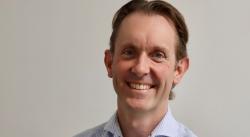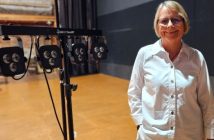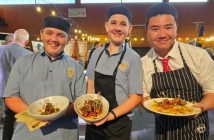A flock of welcome swallows dip and dive through the air above hundreds of school children in Waiwhakareke Natural Heritage Park, a 65.5ha biodiversity project on the north-west edge of suburban Hamilton.
It’s New Zealand Arbor Day and the school children are here, alongside their teachers, parents, Hamilton Mayor Paula Southgate, councillors and others, to plant native seedlings.
Some 18,000 trees will be planted today, many by little hands who will become the next generation of eco-warriors.
Professor Bruce Clarkson stands, spade in hand, admiring the scene. The little feet have stirred up the insects in the grass, and that has the birds excited, he comments.
The University of Waikato ecologist and his team have been involved in this project for more than 16 years.
“People are amazed at what we’ve done at Waiwhakareke,” says Clarkson. “Internationally, they can’t believe it. To get valuable land in the city, and turn it back into native ecosystems, is not a common thing.”
Clarkson, recently awarded the Hamilton Kirikiriroa Medal, one of the city’s highest accolades, leads a multidisciplinary MBIE-funded project called People, Cities and Nature, which has helped guide many councils and communities around New Zealand.
It was his vision and research that helped to launch Waiwhakareke in 2004, a community project that has gathered hundreds of advocates along the way, from councillors to school children.
“It’s not just for the sake of biodiversity, it’s a place of recreation and a place where the community is working collectively, building social cohesion. It has multiple benefits, not just the biodiversity we are bringing,” says Bruce.
Waiwhakareke is a major asset for the city, says Southgate.
She recalls visiting the eco-sanctuary with naturalist Ruud Kleinpaste, “New Zealand’s bug man”.
“He said that Waiwhakareke was the best example of urban restoration that he has seen in the whole country. What he liked about it was that it was natural and uncontrived.”
Its value as an educational space for local school children – whether planting for Arbor Day or learning about pest management and “the little critters and the fish that live there” is “priceless”, she adds.
“But also, it’s a beautiful, serene place. The natural environment is important – to have somewhere where you can go to connect back to life through nature.”
She remembers what it looked like twenty years ago.
“You would have driven past it on Baverstock Road on your way to Hamilton Zoo and hardly glanced at it; it was just four or five paddocks with a couple of cows and a brownish horseshoe lake”.
She was a councillor at Waikato Regional Council when Clarkson presented his strategic long term plan for Waiwhakareke Natural Heritage Park.
It was a plan to bring back the native forest, wetland and lake ecosystem that existed two centuries ago, before European settlement. A vision for a pest-free, self-sustaining biodiversity haven for native birds, bats, lizards and other species, inside the city boundaries.
It won support from Hamilton City Council, which owns the land, along with Waikato Regional Council, Waikato University, Wintec and iwi, community and biodiversity organisations.
Waiwhakareke is now an outdoor classroom and a place where mātauranga Māori (traditional Māori knowledge) is celebrated, alongside the study of flora and fauna.
It also has an appeal as a visitor destination, located next to Hamilton Zoo. A new shared entry is being built.
“On one side of the road you can go and see world ecosystems like the South African savannah, with giraffes and other animals that belong in South Africa, and then you come to the other side of the road and see New Zealand as it was before European settlement,” says Clarkson.
His research on indigenous biodiversity continues to shape the city and has been incorporated into the Hamilton City Council 2021-2031 Long-Term Plan.
Some $29 million is earmarked for restoring and improving the city’s extensive gully network, with the council aiming to increase urban indigenous vegetation cover from two to 10 per cent.
Also awarded Hamilton Kirikiriroa medals were Bruce Clarkson’s wife, Dr Bev Clarkson, an internationally renowned expert in wetlands research and restoration at Manaaki Whenua – Landcare Research, and former Hamilton Gardens director Dr Peter Sergel.





